
views
X
Research source
To effectively use astringent, first find the right type for you. Use it after cleansing and follow up immediately with a moisturizer. You can try out natural astringents made from fruits, herbs, and plants.
Applying Your Astringent of Choice
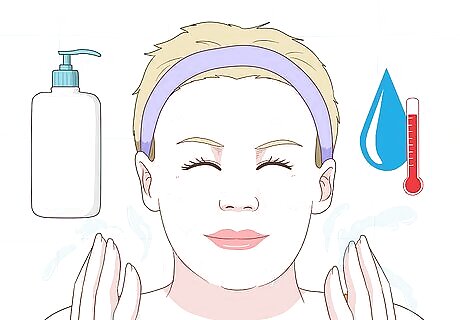
Wash your face with your favorite cleanser or soap and pat dry. Use warm water and your favorite cleanser to wash away makeup and dirt. Gently pat your face dry with a towel.
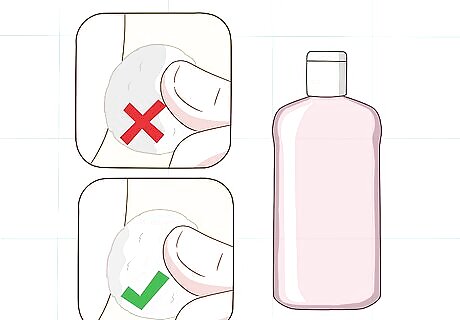
Put a small amount of astringent on a cotton ball and dab on your face. Pour a small amount of astringent onto the cotton ball, enough to make the top of the ball moist but not soaked through. You may rub it in gently, but do not scrub. If you have combination skin, try dabbing the astringent only in your oily areas (often the forehead, nose, and chin). Skip over any dry areas. Some astringents also come in spray bottles that you can lightly mist over your face without using a cotton ball.

Apply an SPF 30 light moisturizer while your skin is still slightly damp. Wait for your astringent to absorb slightly. Then, apply a moisturizer that contains an SPF 30 or higher sunscreen. Choose a light moisturizer or one formulated for oily skin. You may think adding moisturizer to oily skin will only make things worse, but drying out your skin too much can cause even more oil production. It’s best to keep your skin balanced with a light moisturizer. Sunscreen is helpful since your skin is more likely to be sensitive to light after using astringent.
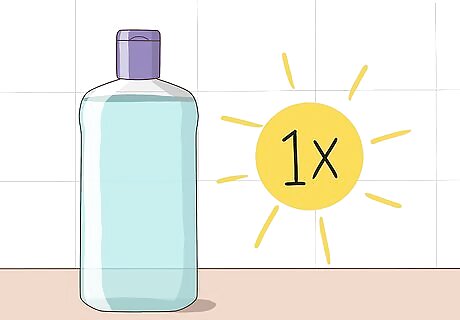
Apply your astringent once per day. Apply your astringent once per day, after you wash your face in the morning. Skip the astringent after cleansing your skin in the evening. If desired, you may use toner in the evening in place of astringent.

Avoid cuts and abrasions when you apply your astringent. Even the mildest of astringents can burn if you put them on an open cut or scratch on your face. It’s best to avoid these areas and wait to apply astringent until the skin is healthy again.
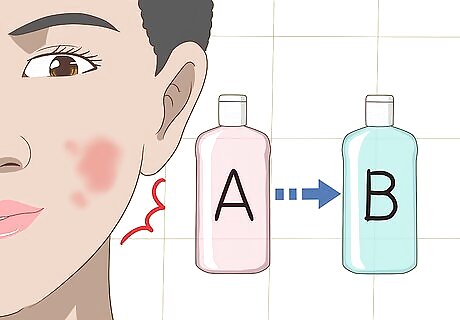
Switch to a milder astringent if your face becomes red or irritated. If you feel a burning sensation or your face becomes red after applying astringent, stop using it. Calm your skin by applying moisturizer. Try a more soothing astringent, or switch to using toner instead.
Trying Natural Astringents

Apply rosewater for an extra mild astringent. Rosewater is a very soothing natural astringent. It has anti-inflammatory properties and can help to soothe irritation and relieve redness. Boil a 1 cup (240 ml) of water and add a handful of rose petals. Continue boiling until the water pulls the color out of the petals. Mix in a few drops of lemon essential oil for an extra astringent boost. Rosewater will stay fresh in the refrigerator for about 2 weeks. Try tearing the rose petals before you put them in the boiling water to help release the nutrients inside the petals. You can also purchase pre-made rosewater.
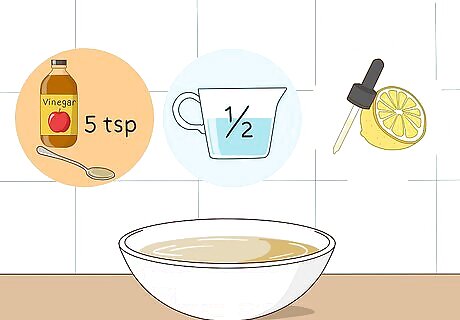
Dilute apple cider vinegar to harness its powerful astringent properties. Apple cider vinegar is a strong natural astringent, so it should be diluted to use. Add 5 teaspoons (25 ml) apple cider vinegar to ⁄2 cup (120 ml) distilled water. Mix in a few drops of essential oil like lemon or rose to cut the vinegar smell. You can adjust the ratio of apple cider vinegar to water depending on your skin type. Try a 1:4 ratio if you have sensitive skin or are trying out astringents for the first time. If your skin still feels oily, you can make a 1:3, 1:2, or even a 1:1 dilution. Store your apple cider vinegar dilution at room temperature.

Use the herbal astringent power of chamomile and mint. Chamomile can remove dirt and control the oil production of your skin. It is also very soothing and can calm sensitive skin. Mint is also a mild astringent and will give this mixture a refreshing scent. To prepare, boil 2 cups (470 ml) of water with a handful of dried chamomile flowers and dried mint. Store your chamomile astringent in the refrigerator for up to two weeks.

Remove oil and lighten your skin with cucumber. Cucumber is not only a natural astringent, but may also help to reduce dark spots. Simply take freshly cut cucumber slices and rub them on your face. Then, rinse your face with water.

Brighten your skin and fight acne with lemon. The ascorbic acid in lemon makes it a great natural astringent. It may also help to brighten your skin and reduce the appearance of scars. Just add a squeeze of lemon to a ⁄4 cup (59 ml) of water, then apply to your clean face with a cotton ball. This lemon astringent mixture can stay fresh for up to two weeks in the refrigerator.
Picking the Right Astringent
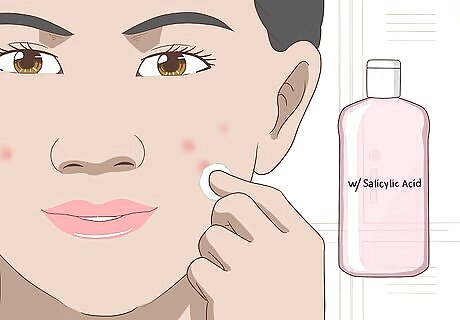
Use astringents with blemish-fighting ingredients for acne-prone skin. Because astringents remove excess oil from the surface of your skin, they can also help prevent clogged pores and acne. If you want to add even more acne-fighting power, find an astringent with a blemish fighting ingredient like salicylic acid or glycolic acid listed among the active ingredients. For acne-prone skin that is not oily, skip the astringent. Drying your skin out too much may increase your breakouts.

Choose alcohol-free astringents if you have sensitive skin. If your skin is prone to redness or irritation, take special care when choosing an astringent. Alcohol-free astringents are much gentler on the skin. If you feel any burning or stinging, or if your face turns red after applying astringent, stop using it. Other ingredients you may want to avoid if you have sensitive skin include fragrances, colorants, menthol, and sodium lauryl sulfate.
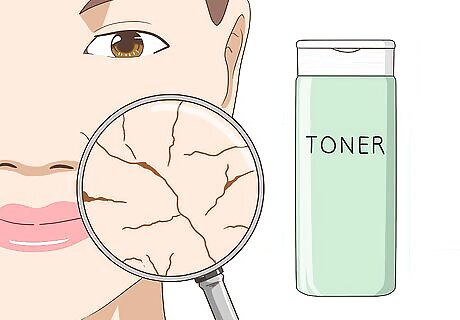
Consider using a toner instead of an astringent for dry skin. If you already have dry skin, an astringent can take out even more moisture and make the problem worse. In this case, you may consider using a toner instead of astringent. They have the same cleansing properties as astringents, but they can help soothe and draw moisture back into the skin. Toners also prime the skin so your moisturizer can penetrate even deeper. To soothe dry skin, look for moisture-enhancing ingredients in your toner like glycerine, propylene glycol, butylene glycol, aloe, hyaluronic acid, and sodium lactate.
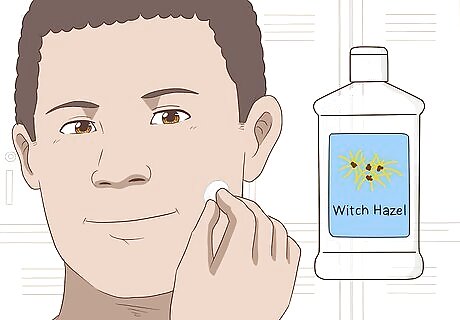
Try using witch hazel if you are unsure what to choose. Witch hazel is a natural astringent made from the bark and leaves of a plant called Hamamelis virginiana. The astringent properties of witch hazel come from natural compounds called tannins. It is a quite gentle astringent that usually works well for all skin types. Sometimes witch hazel products have high concentrations of alcohol. If you want to find the most gentle form of witch hazel, check the ingredients to make sure there is no alcohol, and look for “witch hazel extract” in the ingredient list instead of “witch hazel distillate”.



















Comments
0 comment